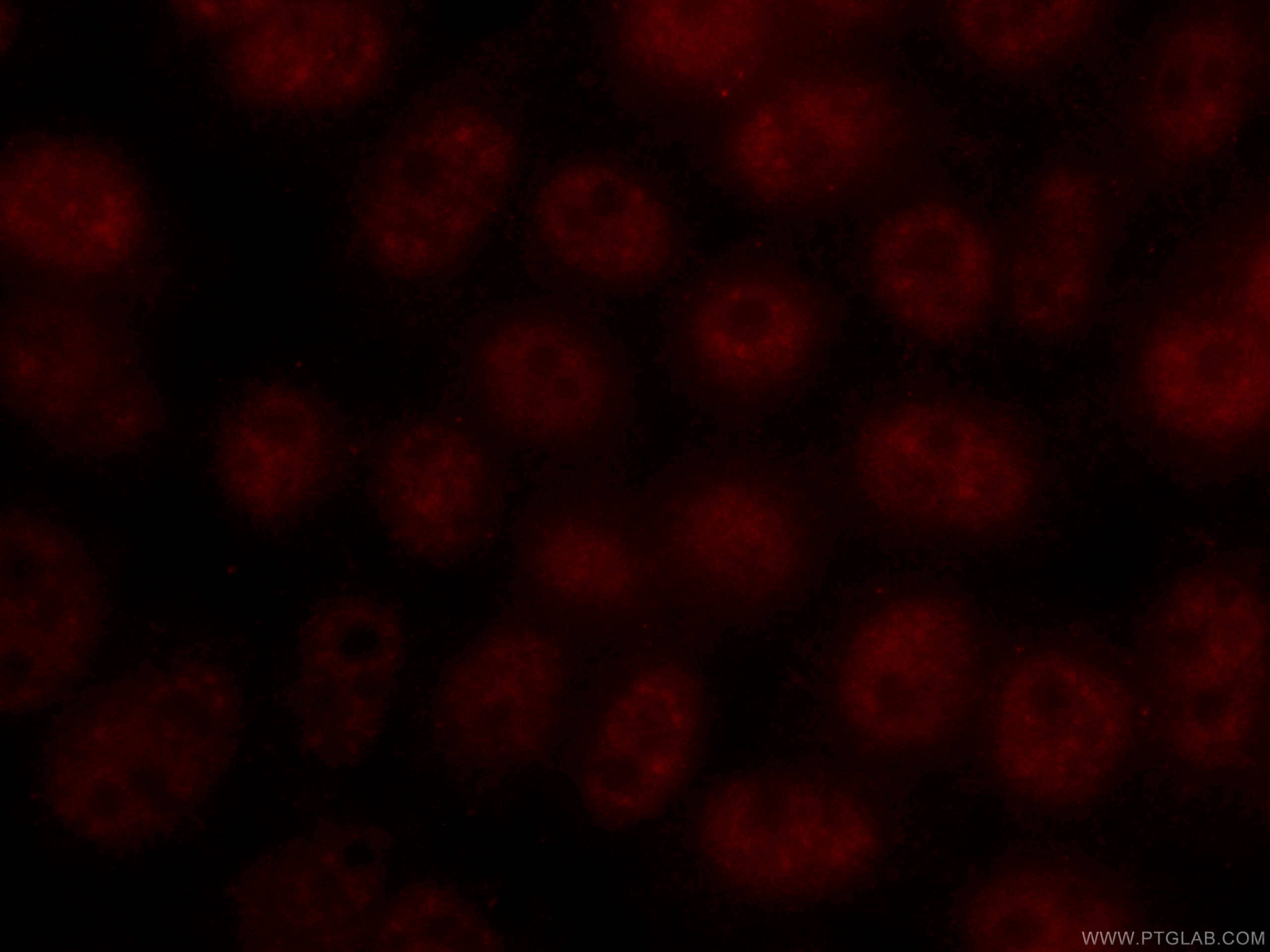Tested Applications
| Positive IF/ICC detected in | HeLa cells |
Recommended dilution
| Application | Dilution |
|---|---|
| Immunofluorescence (IF)/ICC | IF/ICC : 1:50-1:500 |
| It is recommended that this reagent should be titrated in each testing system to obtain optimal results. | |
| Sample-dependent, Check data in validation data gallery. | |
Product Information
CL594-66114 targets TFIP11 in IF/ICC applications and shows reactivity with human samples.
| Tested Reactivity | human |
| Host / Isotype | Mouse / IgG2b |
| Class | Monoclonal |
| Type | Antibody |
| Immunogen |
CatNo: Ag5821 Product name: Recombinant human TFIP11 protein Source: e coli.-derived, PET28a Tag: 6*His Domain: 492-837 aa of BC033080 Sequence: IVTQWQPRNCDPMVDFLDSWVHIIPVWILDNILDQLIFPKLQKEVENWNPLTDTVPIHSWIHPWLPLMQARLEPLYSPIRSKLSSALQKWHPSDSSAKLILQPWKDVFTPGSWEAFMVKNIVPKLGMCLGELVINPHQQHMDAFYWVIDWEGMISVSSLVGLLEKHFFPKWLQVLCSWLSNSPNYEEITKWYLGWKSMFSDQVLAHPSVKDKFNEALDIMNRAVSSNVGAYMQPGARENIAYLTHTERRKDFQYEAMQERREAENMAQRGIGVAASSVPMNFKDLIETKAEEHNIVFMPVIGKRHEGKQLYTFGRIVIYIDRGVVFVQGEKTWVPTSLQSLIDMAK Predict reactive species |
| Full Name | tuftelin interacting protein 11 |
| Calculated Molecular Weight | 97 kDa |
| Observed Molecular Weight | 97 kDa |
| GenBank Accession Number | BC033080 |
| Gene Symbol | TFIP11 |
| Gene ID (NCBI) | 24144 |
| RRID | AB_2883515 |
| Conjugate | CoraLite®594 Fluorescent Dye |
| Excitation/Emission Maxima Wavelengths | 588 nm / 604 nm |
| Form | Liquid |
| Purification Method | Protein A purification |
| UNIPROT ID | Q9UBB9 |
| Storage Buffer | PBS with 50% glycerol, 0.05% Proclin300, 0.5% BSA, pH 7.3. |
| Storage Conditions | Store at -20°C. Avoid exposure to light. Stable for one year after shipment. Aliquoting is unnecessary for -20oC storage. |
Background Information
TFIP11, also named as Tuftelin-interacting protein 11 or Septin and tuftelin-interacting protein 1, is a 837 amino acid protein, which contains one G-patch domain and belongs to the TFP11/STIP family. TFIP11 may localizes in the nucleus and cytoplasm. TFIP11 is involved in pre-mRNA splicing, specifically in spliceosome disassembly during late-stage splicing events. TFIP11 may play a role in the differentiation of ameloblasts and odontoblasts or in the forming of the enamel extracellular matrix.
Protocols
| Product Specific Protocols | |
|---|---|
| IF protocol for CL594 TFIP11 antibody CL594-66114 | Download protocol |
| Standard Protocols | |
|---|---|
| Click here to view our Standard Protocols |




